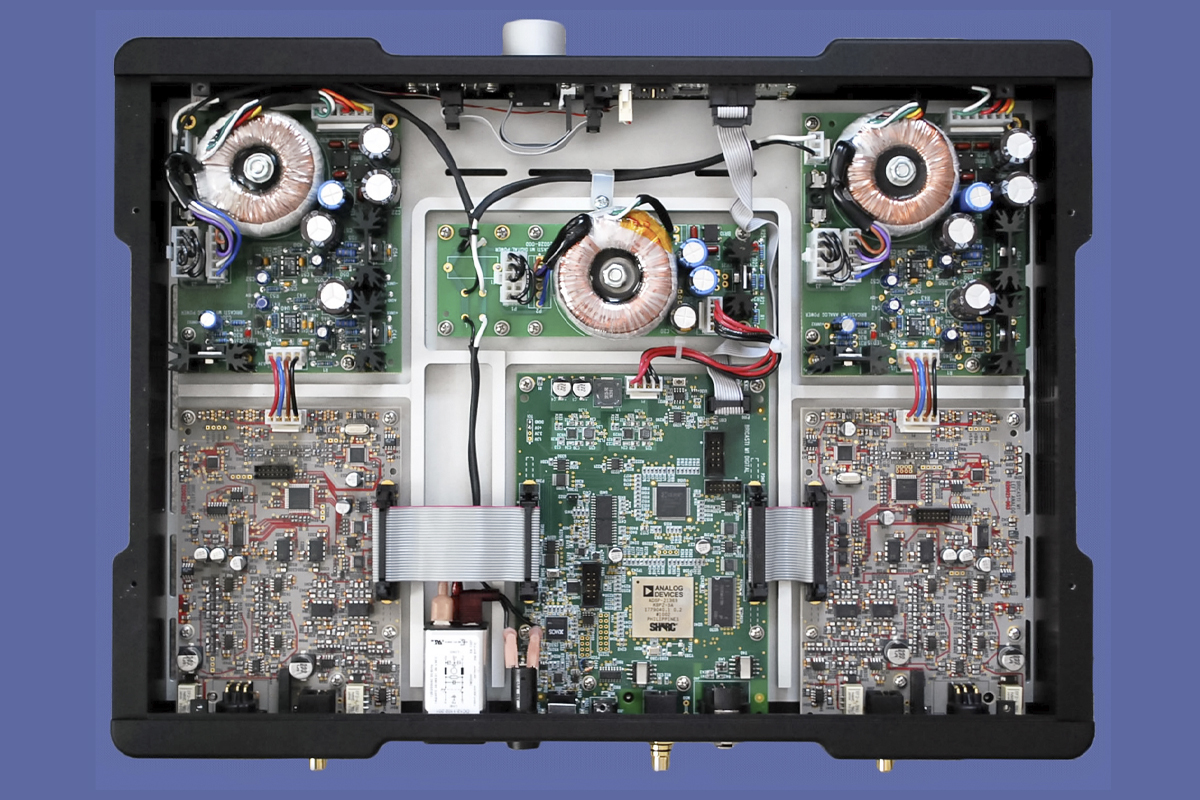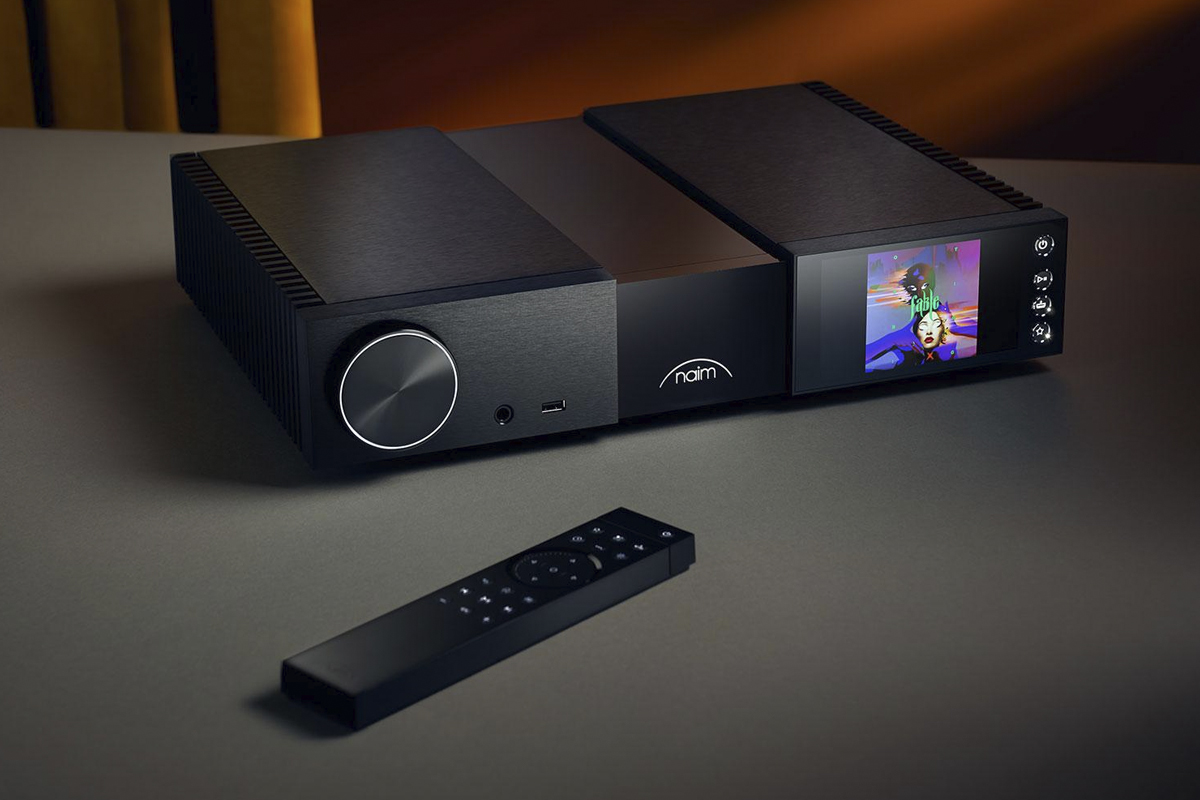What are DACs and why are they important for sound quality.
DACs, or Digital-to-Analog Converters, are devices that play a crucial role in the world of audio. This technology allows the conversion of digital data contained in audio files into an analog signal, which can then be reproduced by headphones, speakers, and other devices.
Let’s take a quick look at what exactly DACs are, how they work, and their importance for sound quality.
What exactly are DACs
DACs (Digital-to-Analog Converters) are electronic circuits or devices that convert digital signals, made up of numerical codes (bits), into analog signals. This is necessary because speakers and headphones can only reproduce analog signals—waveforms that carry sound information. Digital audio formats like MP3, WAV, and FLAC are stored as binary data. Without the DAC, this information cannot be converted into sound that the listener can hear.
How does work
The basic function of a DAC is as follows:
The digital signal (a series of 0s and 1s) enters the DAC.
The DAC translates this binary data into a continuous, analog waveform, which is understandable by audio playback devices.
The analog signal is then amplified and transferred to speakers or headphones, delivering the sound we hear.
Depending on the quality and accuracy of the DAC, audio reproduction can vary significantly.

Why DACs are important for sound quality
Sound quality largely depends on the performance of the DAC. A high-quality DAC can convert digital data with greater precision, preserving more details and naturalness in the audio. In contrast, a low-quality DAC may result in loss of detail and introduce distortion or noise. Moreover, most modern amplifiers, sound cards, and DACs for audio systems support high-resolution audio, meaning they can reproduce frequencies and bit depths that exceed conventional CDs.
Built-in vs External DACs.
Most computers, mobile phones, and portable devices come with built-in DACs for audio playback. However, these built-in DACs are often not of the highest quality, especially in budget devices, which can negatively affect the listening experience. External DACs are dedicated devices that connect to computers, mobile phones, or other audio sources via USB or other connections and handle the digital-to-analog conversion process. These DACs are typically higher in quality and deliver better performance compared to built-in ones.
Advantages of external DACs.
- Better sound quality: They reduce noise and distortions.
- High-resolution support: They can process high-resolution audio that includes more detail.
- Flexibility and adaptability: They can connect to various audio sources and enhance performance.

Differences between 16-bit, 24-bit, and 32-bit DACs
One of the main differences among DACs is their support for different bit depths. Bit depth determines the precision with which a DAC converts digital data into an analog signal.
16-bit DAC: Commonly used for CD-quality files (44.1 kHz/16-bit). Such a DAC is sufficient for CD-quality music playback but does not offer the precision or detail found in higher bit depths.
24-bit DAC: Allows for more accurate conversion of digital signals and is used for high-resolution audio. The difference in sound quality is noticeable, especially when using FLAC, WAV, or other lossless formats.
32-bit DAC: Although the difference from 24-bit DACs is barely perceptible to the human ear, 32-bit DACs offer even greater dynamics and detail, especially for demanding listeners or audio professionals.
Choosing the Right DAC
Selecting a DAC depends on your needs and budget. Here are some criteria to consider:
Sound Quality: For exceptional sound quality, look for a DAC that supports high resolution (e.g., 24-bit/192kHz or higher). Opt for models with positive reviews for sound clarity and low jitter levels. Additionally, pay attention to the DAC chip used, as well-known models (e.g., ESS Sabre, AKM, Burr-Brown) offer reliable performance.
Connectivity: Ensure the DAC is compatible with your devices. Key features to consider include: USB: For connection to computers, laptops, and portable devices. Optical and Coaxial: For connecting to TVs, consoles, or CD players. Bluetooth: For wireless usage. Balanced Outputs (XLR): For professional applications or use with high-end Hi-Fi equipment.
Portability: If you need a DAC for on-the-go use, choose a small, lightweight, and USB-powered model. These DACs are ideal for travel and use with mobile devices. On the other hand, for a stationary setup, opt for larger DACs that often offer more features and better build quality.
Built-in Headphone Amplifier: If you use high-impedance headphones (Ω>100 Ohm), select a DAC with an integrated headphone amplifier. This will ensure your headphones perform at their best. Also, check the amplifier's output power, especially if you have demanding headphones.
Hi-Res Audio Compatibility: If you listen to high-resolution music, choose a DAC that supports DSD or MQA files. This is particularly important for those using streaming services like Tidal.
Budget: DAC prices can range from affordable options to high-end solutions. Depending on your budget, you can find a DAC with features that match your needs without compromising quality.
Sound Signature: Different DACs have different sound signatures. Some offer a neutral sound, while others provide a "warmer" or "brighter" output. Try, if possible, before purchasing to ensure it matches your preferences.
Read the detailed DAC Buying Guide here.

Audio platforms and DAC support
Music streaming platforms like Tidal, Apple Music, and Qobuz now support high-resolution audio (Hi-Res Audio). This means that if you have a compatible DAC, you can enjoy music in a format that closely approaches the quality of the original studio recording.
External DACs in music production
In the world of professional music production, DACs are essential for accurate listening and sound mixing. Producers and sound engineers rely on high-quality DACs to ensure their mixes are precise and every detail in the audio is clear.
Three Key Reasons Why You Need a DAC
1. Enhance the Quality of Your Audio Equipment: Using a DAC is one of the simplest ways to improve the quality of your audio equipment, music player, or smartphone. You’ll notice a significant improvement in sound quality without the need to purchase new equipment or make large investments. Simply integrate this new device into your existing setup.
2. Make the Most of Online Music Services: Today, you can enjoy a vast range of online music services. It’s arguably the best time to have access to an endless variety of options, expand your music knowledge, and discover new bands without even leaving your home. With all these options, it’s a shame not to take full advantage of the potential of songs and instead settle for the sound from basic playback devices. A DAC will help you experience the true performance of the online music world.
3. Experience the Reality of HD Sound: HD audio files are a remarkable achievement in the world of music and audiovisuals. They allow you to enjoy sound much closer to the original recording, capturing its full essence without any loss in quality. Without a DAC, it’s challenging to fully leverage this technology. With one, you’ll truly understand what HD sound means and what it can bring to your senses.
In conclusion
DACs play a fundamental role in audio playback, converting digital data into analog signals that we can hear. The quality of a DAC can make a noticeable difference in the listening experience, especially for those seeking the best possible sound quality. Whether you’re a professional in the audio field or simply a music enthusiast, a good DAC can dramatically enhance your experience.
AthensProAudio Team ©













